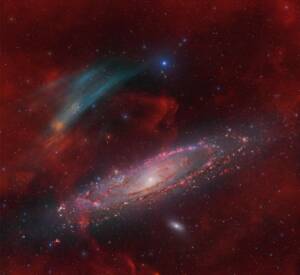
Discovery of the M31 [OIII] emission arc
Recently, a major discovery by an international team of amateur astronomers and scientists has become a huge online hit, and this new discovery is just located in one of the
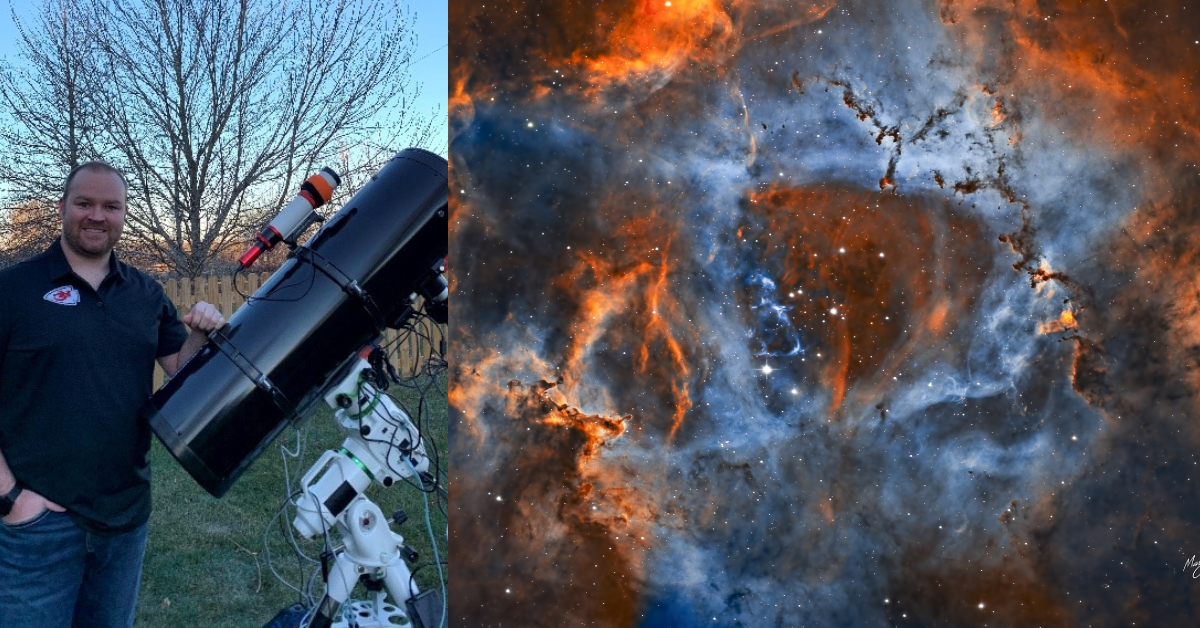
Thank you very much for the honor of being selected as a winner of the ZWO Astronomy Picture of the Week with my 4-panel SHO mosaic of the core of The Rosette Nebula. It is a very humbling experience and I’m very grateful for this opportunity. My name is Mark Carter, and I reside in Kansas City, Missouri with my wife and dog. I am an IT strategist in healthcare software as my day job, but can be found outside in my backyard on cloudless nights for this hobby. I am a Kansas City Royals and Chiefs fan so I spend a fair amount of time following sports as well. I do have to thank my wife because without her support, this hobby simply wouldn’t be the same to me.

As a child, I always dreamed of being a pilot or an astronaut. I fell a little short on the astronaut dream but I did earn multiple pilot’s licensures and ratings but just decided it wasn’t the career path I wanted to follow. Where I fell in love with Astronomy in general was one night when I was much younger, my uncle set up his 8” Meade Schmidt-Newtonian and we looked at Jupiter and Saturn through the eye piece. Unfortunately, my uncle passed away a few years back and I was fortunate enough to receive his gear from his passing. Since then, I’ve found myself using my iPhone to take images of the Moon, Jupiter and Saturn. However, it honestly wasn’t until April 2020 that I picked up a DSLR and took my first image of a bright object in the sky using a simple $20 tripod and that DSLR. I figured there had to be other people doing this, so I went on YouTube and just so happened to find Trevor Jones from AstroBackyard. I’m sure I need to provide no introduction for him as I’m sure you all already know him. I found myself watching nearly every single one of his videos and saw a few Photoshop processing ones so I loaded up Photoshop and followed along for the first time in my life. I had no idea what a layer mask was or anything for that matter but I followed some of those videos and below is officially my first processed image, taken on April 10th of this year. Honestly, it was such an incredible feeling to look at this and realize this thing even existed! I had no clue at the time how much more there was that I was missing. It was pretty much at this point I was hooked. I recall this being only 45 exposures of 6 seconds in length stacked with DSS and Photoshop for post-processing.

I’ll start with just the telescopes since those are the things that change from time to time.
I love to use my Orion 10” Newtonian astrograph. It’s a f/3.9 ratio with 1000mm focal and 254mm aperture. As a result of using this, I’ve found myself doing many mosaics since 1000mm is just a bit too much for a number of nebulas in a single frame. I just can’t help but be completely fascinated with the amount of detail this telescope can resolve. The 254mm aperture allows for so much more light with faint details and being a fast f/3.9 allows me to spend my nights getting great amounts of detail in about half the time most good refractors can.


I used to have a William Optics Z73 APO that I took a number of images with. I have since traded that in for an Askar 400mm Quintuplet APO with the .7x reducer for 280mm focal and 72mm aperture. This has allowed me to really open the door on very wide field images but so far, I’ve only had the chance to do one project with it which was an Orion and Horsehead mosaic. I like this new APO because as it’s basically just as fast as my 10” Newtonian at f/3.8. I realized when typing this that I have not captured an image of my setup with the Askar 400 but below is an image of my William Optics setup and it’s not much difference between the scopes themselves.



Outside of telescopes, I use my Skywatcher EQ6R-Pro mount which honestly, has been such an instrumental item in my setup. Even with my heavy loadout of nearly 40lbs, I can take 10-minute subs with ease. I’ve had to do some fine tuning to clear some of the DEC backlash, but now on an average night I see between .8 – 1.3” total error from PHD2 guiding even with 600 second subs and near max payload capacity.
I use a ZWO 120mm mini for my guide camera and that’s paired with a William Optics 50mm guide scope. I also use a ZWO EFW, EAF, and LRGB filters. For narrowband imaging, I use the Antlia 3.5nm Ha, OIII, and SII filters. I then use a Pegasus Astro Pocket Powerbox and just recently purchased a thin client PC that will be powered by one of the 12V connections as well. I’ve been using my Microsoft Surface Book but since our temperatures get into single digits Fahrenheit for the winter months, I decided I didn’t want the computer outside in that. I do use a USB hub for PC connections and a USB power hub for the two dew heaters I utilize.

I feel like I become loyal to brands which I have good experiences with a quality product. I see value in quality and I had good results from my previous ASI294MC Pro and I love my current ASI1600mm Pro. I even get great results for guiding in the ASI120mm mini. I see others have great results from other brands but I’m very happy where I’m at using ZWO products. As far as other equipment, I feel like a lot of it comes down to preference. Many of the top companies put out quality products which in comparison are all relatively close. I also talk in the communities on social media as well to see what other people think of products they use if they seem to express great satisfaction with them.

To answer the second question first, it was a pain. Earlier I referenced the fact that with the 10” Newtonian, I find I have to do many mosaics. With that in mind, I had to have Hydrogen, Oxygen and Sulfur filter time on 4 separate panels (images) to create one final mosaic. I had finished panels 1, 2, and 3 when I then had 5 days of cloudy weather that followed and delayed me being able to finish up. Doing mosaics in general always proves to be many times more difficult than shooting a single image night after night. Mosaics are incredibly challenging but I find great satisfaction most of the time when a project is completed.
In planning, I used NINA for mosaic framing and acquisition using 60% overlap of the 4 panels. I wanted to do more to get the entire nebula but I knew my clear nights were limited. NINA makes this process very easy to capture, and Astro Pixel Processor does a fantastic job of building these mosaics for me once I input all of the data and change a couple of settings to let it know I’m building the mosaic versus a single frame.
I stack everything in Astro Pixel Processor, and then I use PixInsight and Photoshop collectively as I feel Photoshop has a little more flexibility in some areas that PixInsight does but overall, PixInsight does about 90% of all my work steps.
To answer the second question, in my opinion, if you don’t believe post processing is the hardest part of astrophotography then you’re probably doing something wrong. In April of this year, I had never used Photoshop a day in my life. I had to watch many YouTube videos and read a book on using Photoshop to even get to a point where I was productive in processing. Then, with some encouragement, I made the leap to PixInsight. I have to be honest, Steven Miller (Entering Into Space on YouTube) was an instrumental person in this leap. He had posted numerous videos that went through full processing that I picked up many steps and workflows from. I read “Inside PixInsight – Second Edition” by Warren A. Keller which was also a game changer for me to really grasp concepts of the tools in PixInsight. With all of these collectively together, post processing makes more sense and keeps pushing me to learn ways to improve. I definitely don’t see this part of astrophotography ever peaking but merely continuing to learn for years to come.
My family has been incredibly supportive. My wife especially has been amazing in this new experience and has been incredibly supportive. While she doesn’t share the same passion of astronomy and cosmology that I do, she shares in supporting my passion for them and the final images that I produce.
I think it goes without saying, but my mom has always supported anything I’ve done and I’m forever grateful for her. My brother and sister-in-law love the images too and understand the complexity and commitment that goes into them.
One family member in particular that has been incredibly meaningful to me in this process is my nephew, Gavin. At 6 years old, he can already tell you that Hydrogen is red, Oxygen is blue, and a nebula is smaller than a galaxy, along with many other things. He’s incredibly smart and I sure hope to help teach him more about space in general. I get excited to share these images with him every time I have a new one because his joy is genuine.
My Uncle, Aunts and cousins have all been there every step of the way providing encouraging support all the time. I have a great core of family members and they’re always there for me.
When my family comes out with me it’s usually for just visual observing. I usually end up just pointing out areas and objects in the sky and explain what they are. Currently, it is such an incredible time with Orion, the Pleaides, Andromeda, Mars, Jupiter and Saturn being in the sky to observe.
The summer months can prove to be tough. The Jetstream seems to find its way directly overhead many times throughout the year but more so in the summer time which causes some poor seeing conditions from time to time even with the clearest of skies. Winter time though, it’s less impactful and we have some amazingly clear nights here in the Midwest United States.
I do 100% of my imaging in my backyard. I reside in a Bortle 5 zone and to my north and east, the nearest city is over 20 miles/32 km away so there’s very little light pollution. Imaging to the west and south is where I can see a faint orange glow from the city lights so I do try to do as much imaging directly East and Northeast as possible. I do find myself imaging more in SHO/HOO than LRGB but hope to expand upon that soon.

While I haven’t done any traveling with all the gear yet, I’d say the most unforgettable experience this summer was listening to the wild ‘circle of life’ take its course. There are coyotes that hunt in the large open fields behind my house and let’s just say it’s pretty vicious when they complete that ‘circle of life’.
At first, I used to stay up all night by using a remote desktop agent on one half of my 40-inch monitor, and a movie on the other. I do try to get naps during these nights too for small periods as there have been so many and I still have to work the next morning, but usually playing a few action movies tends to help.
Changes are the lack of sleep, clearly. Whether it’s the imaging aspect, or the post-processing, they both take multiple hours and with the rest of the ‘real world’ happening at the same time, you sometimes struggle to find the time to do it all. I’ve found myself with data from two targets waiting to be processed, but already on to a 3rd target of imaging.
As far as surprises, I think this hobby is more of an eye opener. It truly shows you how small we are in this world and it’s incredible to think about the possibility that something could be looking back at us imaging the Milky Way like we do Andromeda.

I currently use the ASI1600MM Pro, ASI120MM mini, EAF, EFW and LRGB filters so 5 items (not counting each filter individually). I formerly owned an ASI385MC and ASI294MC Pro.
I loved my ASI294MC Pro for its ability to capture wonderful OSC imagery, but the ASI1600mm is the king of items on my shelf. It has opened the door of imaging opportunities but has definitely brought on many complexities and frustrations at the same time. I’d love to upgrade for the higher resolutions and improved image quality of something like ASI6200MM but I’ll have to wait some time before I could justify the expense. For now, the ASI1600mm is my prized possession.
When I started out in monochrome, it would have been helpful to have some feedback on different gain and offset information. There are some good articles from third-parties but would be nice if ZWO was able to provide some recommendations as well to get users who need that assistance moving. I know I had reached out once with a concern and the response I received was ‘working as expected’ but no real assistance provided in fixing.
This is a loaded question for most people I’m sure, but for me it’s simple… everything! I started this hobby, I learned about this hobby, I had my ups and I had my downs, and the best part is I got to share the experience with friends and family.
Other accomplishments include three Astrobin Photo of the Day Nominees (Lion Nebula, Cygnus Wall, Soul Nebula), SharpCap Image of the Day (Pleiades), ZWO Picture of the Week (Rosette Nebula) and published in “The Messier Catalog Workbook” by Antoine & Dalia Grelin – Galactic Hunter (Pleiades).
Right now, my biggest goal is to improve on monochrome LRGB work. All of my LRGB work before has been with a one-shot-color camera so it’s going to be another learning experience.
I think I speak on everyone’s behalf when I say I’d love to win a Nasa APOD too but honestly, I’m enjoying the experience more than anything. I’m always honored to have my images selected for any form of recognition but my goal is to simply create beautiful images with what I know; if I get recognition too that’s merely a side effect of my efforts is how I see it.


Recently, a major discovery by an international team of amateur astronomers and scientists has become a huge online hit, and this new discovery is just located in one of the
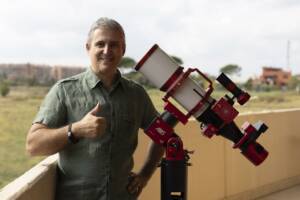
– Q3 ASIWEEK Winner Gianni Lacroce’s Astrophotography Journey Hi, I’m Gianni Lacroce, an Italian astrophotographer. My passion for the night sky began long before I owned a telescope or a
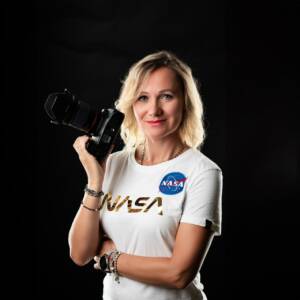
INTRODUCTION My name is Marzena Rogozińska. I live in Bytom (Poland) and work as a psychologist and pedagogue at two schools. I would like to thank you for honoring my
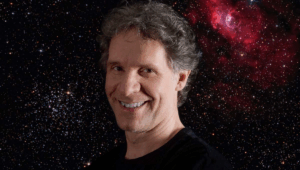
Two years after winning #44/2023, Robert Eder, a sound engineer from Vienna, Austria, has once again claimed victory with #27/2025 ASIWEEK, returning to share his astrophotography journey. Combining technical skill

—— “Even though astrophotography is often considered a ‘solitary’passion, it is in fact very social when others help you through the toughest moments.” Hello, my name is Paweł Radomski, I

“I can say that it all started from there.” Giacomo’s connection with astronomy began early. “I’ve always been passionate about the sky since I was a child,” he recalls. At
2 Comments
Amanda Huffman
Congratulations Mark! Thanks for sharing your passion with your very isolated co-workers, it’s been a source of entertainment for us as well!
Matt Stemple
I have several of Mark’s prints on the wall in the room I used for meetings. I frequently get comments about how awesome they are. Looking forward to adding to my Mark Carter Astro collection!